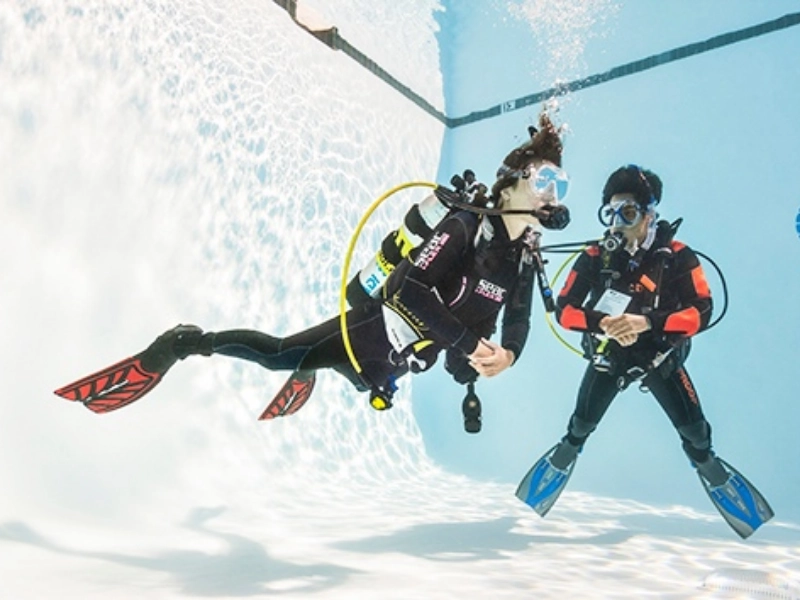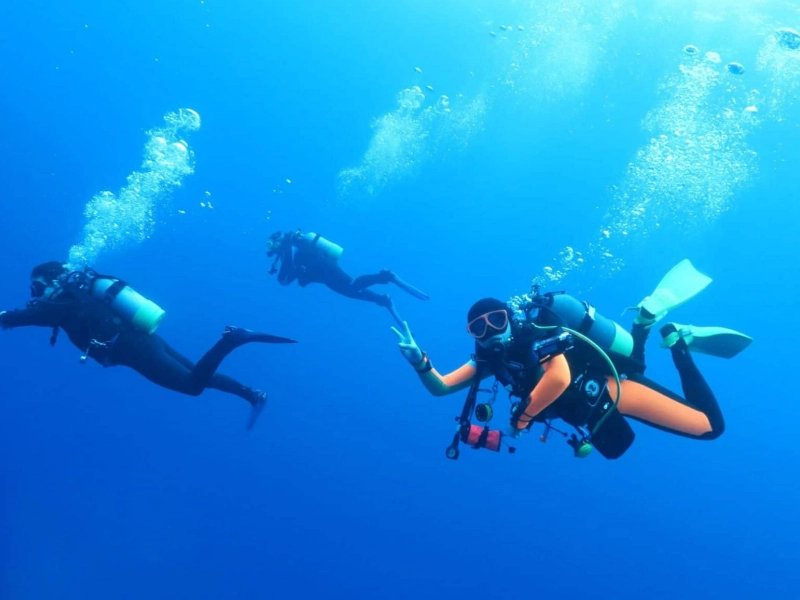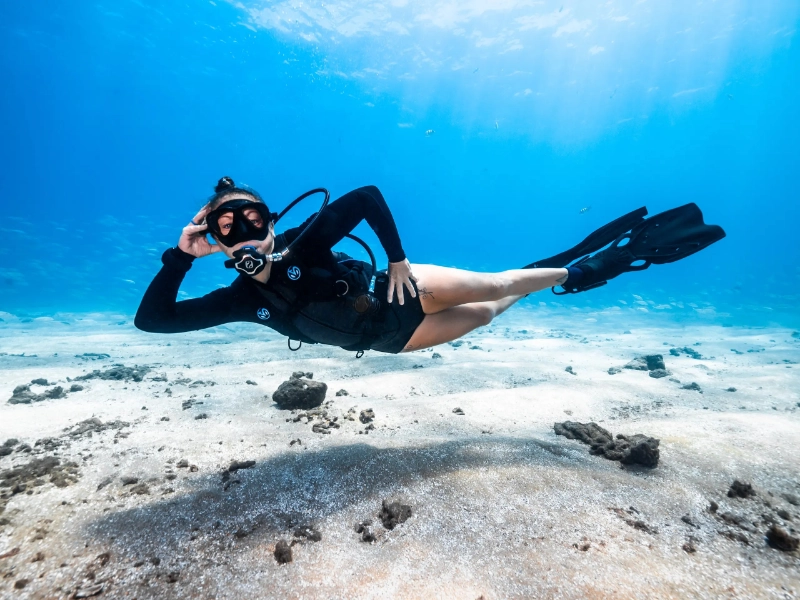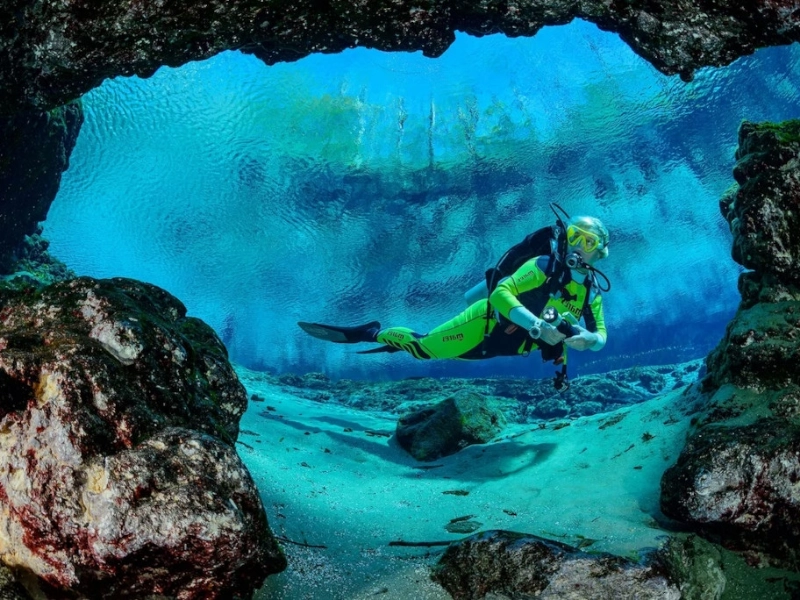Dive SiteRatings Explained: Understanding Difficulty Levels
A diving location's overall difficulty grade is determined by several variables. The number of somersaults, flight position, twists, approach, and unnatural entry are the five primary factors. Difficulty levels are a beneficial approach for action games to objectively gauge a player's progress from beginner to expert. What challenges one diver on a dive might not cause tears in the eyes of another.
Novice

Moderate
 These sites will be challenging, but not overly so, for divers who have participated in recreational dives and are aware of their personal diving limitations. These places could have characteristics that entice inexperienced divers to go beyond their comfort zones. These characteristics could include: marine life readily available below maximum dive depths or in cave or cavern penetrations; powerful currents at shallower depths; and enticing opportunities to penetrate wrecks.
This breathtaking location, known for being a sensory overload, has a wealth of fauna to be discovered, including iguanas, sharks, and oceanic manta rays, in addition to schooling fish and eagle rays. The site's numerous distinct and erratic currents offer a dynamic and enjoyable experience, complemented by a pristine and diversified ecosystem. You will be enthralled by this website even after visiting it several times! It receives a mediocre rating as a result. Any outfit that labels a 212-foot dive as moderate is quite careless!
These sites will be challenging, but not overly so, for divers who have participated in recreational dives and are aware of their personal diving limitations. These places could have characteristics that entice inexperienced divers to go beyond their comfort zones. These characteristics could include: marine life readily available below maximum dive depths or in cave or cavern penetrations; powerful currents at shallower depths; and enticing opportunities to penetrate wrecks.
This breathtaking location, known for being a sensory overload, has a wealth of fauna to be discovered, including iguanas, sharks, and oceanic manta rays, in addition to schooling fish and eagle rays. The site's numerous distinct and erratic currents offer a dynamic and enjoyable experience, complemented by a pristine and diversified ecosystem. You will be enthralled by this website even after visiting it several times! It receives a mediocre rating as a result. Any outfit that labels a 212-foot dive as moderate is quite careless!
Progression
 A diver's experience is a major factor in determining their rating, and there is no set definition for an advanced dive. Generally speaking, though, sites with more depth involved are seen as more sophisticated. This can apply to any dive that is shorter than the maximum dive depth, as well as dives with less control over gas supply and/or decompression duration. It could also be used to describe locations with characteristics that encourage seasoned divers to go beyond their comfort zones. Consider challenging currents at a location, a cavern, or the penetrations of a cave. This website is one such example.
A diver's experience is a major factor in determining their rating, and there is no set definition for an advanced dive. Generally speaking, though, sites with more depth involved are seen as more sophisticated. This can apply to any dive that is shorter than the maximum dive depth, as well as dives with less control over gas supply and/or decompression duration. It could also be used to describe locations with characteristics that encourage seasoned divers to go beyond their comfort zones. Consider challenging currents at a location, a cavern, or the penetrations of a cave. This website is one such example.
Professional
 You can be considered an expert diver if you have completed many additional courses and have a lot of diving experience. You've logged between 100 and 500 dives, so you know your equipment inside and out. Sites featuring 'temptations' that could lure in less experienced divers beyond the scope of their training and/or experience would receive a higher rating (e.g., wreck penetrations below maximum dive depths, sites with potentially dangerous marine life at a shallower depth than normal, etc.). This level is not defined by the industry; however, it can include advanced recreational divers with a large logbook of dives, as well as dive masters and instructors.
You can be considered an expert diver if you have completed many additional courses and have a lot of diving experience. You've logged between 100 and 500 dives, so you know your equipment inside and out. Sites featuring 'temptations' that could lure in less experienced divers beyond the scope of their training and/or experience would receive a higher rating (e.g., wreck penetrations below maximum dive depths, sites with potentially dangerous marine life at a shallower depth than normal, etc.). This level is not defined by the industry; however, it can include advanced recreational divers with a large logbook of dives, as well as dive masters and instructors.








